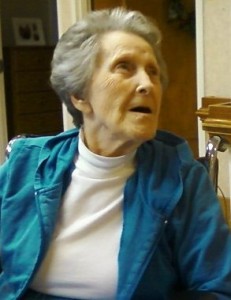
 Next week begins National Caregivers Month, and new statistics from the AARP and National Alliance for Caregiving show that non-paid family caregivers are becoming a diverse group. While still predominantly baby boomer women, millennials hit the radar, making up 25 percent of family caregivers, split evenly between men and women. That’s 10 million people. Clearly, millennials and boomers are audiences that are demanding and want the best possible experience for their elder loved one and when the time comes for themselves. That is why health providers need to start looking at the experience of care through a new lens — dementia friendly. I see three opportunities.
Next week begins National Caregivers Month, and new statistics from the AARP and National Alliance for Caregiving show that non-paid family caregivers are becoming a diverse group. While still predominantly baby boomer women, millennials hit the radar, making up 25 percent of family caregivers, split evenly between men and women. That’s 10 million people. Clearly, millennials and boomers are audiences that are demanding and want the best possible experience for their elder loved one and when the time comes for themselves. That is why health providers need to start looking at the experience of care through a new lens — dementia friendly. I see three opportunities.
- Improve the experience of employees by identifying, embracing and creating programs for family caregivers in the workplace.
- Improve the patient/resident/person experience by becoming dementia friendly.
- Strategically position the organization from a marketing perspective by leading dementia-friendly initiatives in the communities served.
By becoming dementia friendly, providers in turn become safer, provide higher quality and gain a distinct market advantage. Dementia friendly complements other provider mandates and helps providers anticipate the trends impacting healthcare. In my white paper, Dementia Friendly as a Strategic Imperative for Hospitals and Health Care Providers, I detail ways to achieve all three of these initiatives. Let’s take a high-level look at the necessary steps to becoming a dementia-friendly provider.
Assess Organizational Readiness
For providers, it is first essential to know from an attitudinal and cultural standpoint where the organization ranks in its sensitivity to aging issues. One tool from the Wisconsin Department of Health Services Bureau of Aging and Disability Resources can help. The bureau’s “Attitude Toward Dementia including Alzheimer’s Disease” tool identifies key strengths and potential areas for improvement in a dementia care environment, in essence, a cultural assessment tool.
Put Yourself in Their Shoes
You have probably participated in aging sensitivity training sessions where the physical challenges that older people experience is simulated. What if people could also experience the cognitive and sensory challenges too? I recently did at the American Health Care Association’s (AHCA) national conference where I took The Virtual Dementia Tour® (VDT), an award-winning, scientifically-proven method of training designed by P.K. Beville to build sensitivity and awareness in individuals and healthcare providers who are providing care for those who are living with dementia.
Assess the Environment
Knowing your cultural readiness and being exposed to what it is like to “walk in their shoes,” an organization is now ready to assess the environment. There are several good assessment resources available.
- The Person-Centered Dementia Care Assessment Tool is a best practice tool developed by the Wisconsin Department of Health Services Bureau of Aging and Disability Resources.
- As part of its Dementia Friendly Community initiative, ACT on Alzheimer’s includes hospital assessments that focus on staff training, follow-up information and education for consumers, and referrals to outside services and supports.
Assess Inpatient Hospital Care
Assessment of the inpatient hospital care environment needs to begin in Admissions and Intake. The key to person-centered and person-directed care is to get to know the person being taken care of so that care can be tailored to their desires and preferences when appropriate. A variety of tools exist to help providers.
- The Alzheimer’s Society in the U.K. has the This is Me assessment. Itprovides information about the person at the time the document is completed.
- A variation of this tool is “Get to Know Me” created by Ellen Belk.
- Sheila Brune’s The Living History Program, is a copyrighted program that records and creates the personal story of patients.
Raise Staff Awareness  Gary Joseph LeBlanc has created The Hospital Wristband Program to raise awareness and ensure staff is aware of an underlying dementia diagnosis or someone identified at-risk of cognitive impairment.
Gary Joseph LeBlanc has created The Hospital Wristband Program to raise awareness and ensure staff is aware of an underlying dementia diagnosis or someone identified at-risk of cognitive impairment.
- Hospital staff, volunteers and first responders receive training developed by LeBlanc.
- A dementia screening is added to the admissions process.
- Upon admission, those identified with a prior diagnosis or identified at risk have a Purple Angel affixed to their hospital wristband and on their door, reminding those entering to keep the patient’s special needs in mind.
Look at the Coordination of Care
Many health care providers have care coordinators that work in service line specific environments. Often providers lament that they need a coordinator for the coordinators. In the U.K. certain hospitals in the NIH have implemented a role, Dementia Coordinator, to service this specific patient population across diagnoses. It is critically important.
Train and Educate Staff
Acting on the findings of a dementia assessment and instituting effective programs at admission can only be successful if the health care staff is educated about dementia, including Alzheimer’s so as to understand how to work with patients and their family caregivers. There are many education models in place including the Alzheimer’s Association’s Dementia- Friendly Hospital Initiative (DFHI): Care Not Crisis.
Consider a Specialty Focus
Forward-thinking hospitals have recognized the value of certain services and programs that improve the quality of care for all elders with or without dementia, while reducing costs and preventing unnecessary admissions and readmissions.
NICHE (Nurses Improving Care for Healthsystem Elders) is the leading nurse-driven program designed to help hospitals and health care organizations improve the care of older adults.
Focus on the ED
Effective work by NICHE nurses can happen in the Emergency Department, where unnecessary hospitalizations can be avoided and where appropriate referral to community resources can be made. Taking it a step further, a small but growing number of hospitals are building emergency departments specifically for elderly patients.
Consider Outpatient Geriatric Assessment Centers
Some organizations have created outpatient geriatric assessment centers. These types of centers can become the medical home for dementia patients and their caregivers.
 Begin in the Medical Practices
Begin in the Medical Practices
The cultural and environmental assessments conducted in the hospital setting should also be conducted in physician practices. Early detection and diagnosis of dementia, including Alzheimer’s is critical. Unfortunately, medical providers do not routinely assess the cognitive health of their patients, leading to delayed diagnosis and post diagnostic care. Currently, less than 35 percent of people with dementia have the diagnosis documented in their medical record. Act on Alzheimer’s has a toolkit of practice decision tools that are free to use and adapt with attribution.
A Blue Print for Success
Clearly, there is a blueprint to become dementia friendly. Want the rest of the story? Get your copy of our free white paper on our Facebook page and like our page when you are there! No Facebook? No problem. Send me an email and I will send the white paper to you and add you to our list for future updates.





5 Comments
This is such an important topic, Anthony! We need to move this country forward to better meet the demands that a swelling increase in dementia patients– and their caregivers– will present as this epidemic hits our society in the next few years.
Thanks Becky . We should talk and compare notes!
Hey Becky..
I totally agree with you. We have to move this country ahead to better meet the demand. And there should be integrated healthcare management services so that people would learn about health care.
This is very well-written, Anthony. Dementia care is daunting, but it may not be as challenging as you would expect. I think the right attitude is crucial to success.
thanks for sharing your insights. This is such a great article. More power!